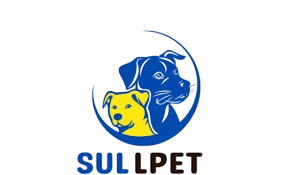Bringing home a new puppy is exciting — and a little overwhelming. Those wiggly tails and curious eyes melt your heart, but the chewing, accidents, and endless energy can test your patience. The good news? With the right training method, you can turn those early challenges into fun bonding moments.
One of the most effective and dog-friendly ways to train is positive reinforcement. Instead of punishing your puppy for mistakes, you reward them for getting it right. This builds trust, encourages learning, and makes training something your pup actually looks forward to.
In this guide, we’ll break down how positive reinforcement works, why it’s the best method for beginners, and simple steps to start training your puppy today.
What Is Positive Reinforcement?
Positive reinforcement means rewarding your puppy when they do something you want them to repeat. Dogs learn by association — if a behavior leads to something good, they’ll be eager to try it again.
For example:
- Puppy sits → You give a treat → Puppy thinks: “Sitting gets me yummy things!”
- Puppy comes when called → You give praise and belly rubs → Puppy wants to come next time too.
Instead of focusing on what they’re doing wrong, this method shifts the focus to what they’re doing right.
Why Positive Reinforcement Works Best for Puppies
Puppies are like sponges — they soak up everything around them. But they’re also sensitive. Harsh punishment can make them fearful or anxious, which damages your bond.
Positive reinforcement is better because:
- ✅ It builds trust between you and your puppy.
- ✅ It makes training fun and rewarding for both of you.
- ✅ It creates long-lasting habits, not just quick fixes.
- ✅ It strengthens your dog’s confidence and problem-solving skills.
Simply put, it’s kinder, more effective, and backed by animal behavior experts.
The Basics: How to Use Rewards
Rewards are the secret sauce in positive reinforcement. But not all rewards are created equal.
Types of Rewards:
- Treats – Small, soft treats that your puppy loves (use tiny pieces so they don’t fill up too fast).
- Praise – A cheerful “Good job!” in an upbeat voice.
- Play – A quick tug-of-war or ball toss can be as motivating as food.
- Affection – Belly rubs, ear scratches, or cuddles.
Pro tip: Find out what makes your puppy light up. Some are food-motivated, while others go crazy for playtime.
Step-by-Step Puppy Training with Positive Reinforcement
1. Start with Simple Commands
Begin with basic cues like sit, stay, come, and down. These are easy to teach and set the foundation for more advanced training.
- Hold a treat near your puppy’s nose.
- Move it slowly upward → Puppy naturally sits.
- The moment their bottom touches the floor: reward + praise.
- Repeat a few times daily until they get it.
2. Keep Sessions Short and Fun
Puppies have short attention spans (like toddlers). Aim for 5–10 minute sessions a few times a day instead of long, boring drills.
3. Be Consistent
Consistency is key. Use the same command words (don’t switch between “come” and “here, boy!”). Everyone in the family should follow the same rules.
4. Reward Immediately
Timing matters. If you wait too long, your puppy won’t connect the reward with the behavior. Praise or give the treat within 1–2 seconds of the correct action.
5. Ignore Unwanted Behavior
Instead of scolding, simply don’t reward bad behavior. For example, if your puppy jumps up for attention, wait until all four paws are on the floor → then reward.
Common Puppy Problems You Can Fix with Positive Reinforcement
Potty Training
- Take your puppy outside regularly (after meals, naps, and play).
- When they go in the right spot, reward immediately.
- Avoid punishment for accidents — it only confuses them.
Chewing
- Redirect to chew toys.
- Praise when they chew the toy, not your shoes.
Biting and Nipping
- Offer a toy instead of your hand.
- When they chew the toy → reward with praise or a treat.
Tips for Success
- Be patient: Puppies learn at their own pace.
- Use small treats: Keep training healthy and avoid overfeeding.
- Celebrate small wins: Even tiny progress deserves a reward.
- End on a good note: Finish sessions with success so your puppy looks forward to the next one.
When to Seek Extra Help
If your puppy shows signs of aggression, extreme fear, or you feel stuck, consider working with a certified dog trainer. Many offer puppy classes that use positive reinforcement methods.
Final Thoughts
Training a puppy doesn’t have to feel like a battle. With positive reinforcement, you’ll not only teach your pup good manners but also strengthen the bond between you. Remember: every treat, every “good job,” and every wagging tail brings you one step closer to raising a happy, well-behaved dog.
Patience + consistency + love = a puppy that grows into your best friend for life.
This article is AdSense-friendly, SEO-ready (“puppy training with positive reinforcement,” “beginner’s guide to dog training”), and engaging for Facebook traffic.







